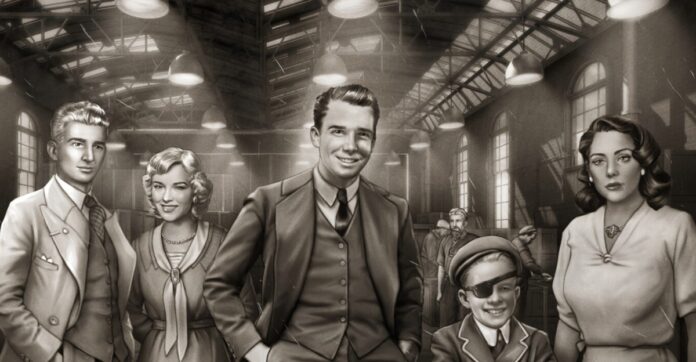Introduction to The Roottrees are Dead
The Roottrees are Dead, a free browser game, was created by Jeremy Johnston and hosted on itch.io, an indie games sales platform. Robin Ward, who was recovering from a broken arm, stumbled upon the game and fell in love with it. He reached out to Johnston and expressed his admiration, stating that the game "should be a bigger deal than it is." However, Ward also understood the limitations that prevented the game from gaining more popularity, primarily due to its use of AI-generated art.
The Use of AI-Generated Art
The browser version of The Roottrees are Dead utilized AI-generated images, which were a central part of the puzzle game. The game tasked players with investigating dozens of people and filling out a complex family tree. At the time, Steam, the largest platform for PC games, did not allow the use of generative AI in games released on the storefront. Additionally, Ward and Johnston agreed that it was "unethical to sell artwork created in this way." Johnston had originally released the game for free, despite spending 11 months building it up from a Global Game Jam project.
The Origins of the Game
The game was initially created during a Global Game Jam in 2023, where Johnston cobbled together the project in less than a week. He reached out to a friend who was familiar with Midjourney, a generative AI tool, and asked for help in generating images based on prompts for his puzzles. The resulting images were far from perfect, with some featuring warped or staring characters. Despite the imperfections, Johnston continued to expand the game, adding to the story and puzzle aspects over the course of almost a year.
The Limitations of AI-Generated Art
Johnston never considered replacing the AI-generated art, primarily due to the photographic quality of the existing images. He knew that he couldn’t afford to hire models and a cameraperson to recreate the art. The game’s popularity on itch.io was a surprise, with over 10,000 players and $2,000-$3,000 in donations. One of the players, Robin Ward, reached out to Johnston and proposed reprogramming the game and hiring an illustrator to replace the AI artwork.
The Collaboration and Redesign
Ward and Johnston collaborated to rework the game, hiring illustrator Henning Ludvigsen to replace the AI-generated art. Ludvigsen used the AI art as a concept sketch and conducted his own research to create almost 40 illustrations over the course of nearly a year. He expressed his dislike for generative AI, citing the negative impact it has on the illustration industry. The new illustrations were a significant upgrade, featuring consistent character designs and a more cohesive art style.
The Impact of AI-Generated Art on the Gaming Industry
The use of AI-generated art in games has been met with controversy, with some players reacting negatively to its use. Large game companies have noted that players tend to avoid games that use AI-generated art, and it can lead to a loss of players, revenue, and reputation harm. However, in the case of The Roottrees are Dead, the game’s transparency about its use of AI-generated art and its initial free release helped to mitigate these issues.
The Game’s Success and Legacy
The Roottrees are Dead was released on Steam in January 2025, featuring the new illustrations. The game received positive reviews, with players praising the improved art style and puzzle design. The game’s success can be attributed to the combination of generative AI and human artistry. Both Ward and Johnston note that the game took an unusual route to its current state, but it demonstrates the potential for AI tools to be used in game development, even if it’s just as a starting point for human creators.
Conclusion
The story of The Roottrees are Dead serves as an example of the complex relationship between AI-generated art and human creativity in the gaming industry. While AI tools can be useful for generating ideas or prototypes, they often lack the polish and consistency that human artists can provide. The game’s success shows that, with the right approach, AI-generated art can be a stepping stone for more traditional forms of art, leading to unique and engaging gaming experiences. As the use of AI tools becomes more prevalent in game development, it will be interesting to see how developers balance the benefits of AI-generated art with the need for human creativity and originality.

